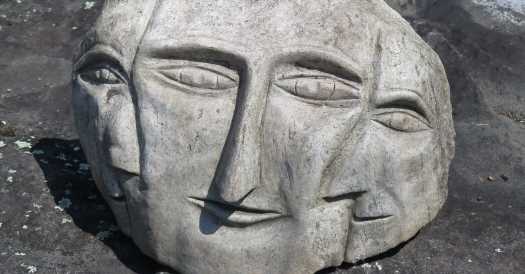This year’s Outsider Art Fair in New York took the form of an online event with in-person exhibitions at a handful of galleries. Next year, this fair, which typically takes place at the end of January, will open in early February at its usual Chelsea location.
Now, the fair’s organizers have produced “Super-Rough,” a selection of some 200 sculptural works by an international roster of art brut and outsider artists, with Takashi Murakami as guest curator.
The exhibition, which opens at 150 Wooster Street in SoHo, on Wednesday and runs through June 27, will offer a survey of welded-metal, carved-stone, embroidered-fabric and cut-paper creations by nearly 60 artists.
The name “Super-Rough” plays on the term “super-flat” Murakami coined, even if it shares no allusions to traditional Japanese art forms’ actual flatness and sometimes accentuated two-dimensionality in pictorial space. And as the title suggests, “Super-Rough” will call attention to the power of the craftsmanship of self-taught sculptors.
Mixed-media assemblage works by A.C.M. (the artist Alfred Corinne Marié), Hawkins Bolden, Paul Amar and other autodidacts who work or worked with found or castoff materials will be plentiful, too. The art will come primarily from American and foreign dealers who participate in the New York fair.
As for Murakami, in the past, he sent up and reworked stylistic phenomena in his own work, which was as colorful as it was subversive in its take on Japanese pop culture’s obsession with cuteness in cartoon-character mascots, fashion or corporate logos. Today, Murakami acknowledges an aesthetic journey that has taken him from a critique of cute pop to an embrace of art brut and outsider art’s celebrated aura of authenticity.
In a recent email interview, writing from his studio in Tokyo, Murakami noted that as a university student, “I became aware of outsider art when I saw an exhibition at the Setagaya Art Museum.” That 1993 show, in Tokyo, called “Parallel Visions: Modern Artists and Outsider Art,” had originated at the Los Angeles County Museum of Art. In 2011, also in Tokyo, Murakami saw an exhibition of the American outsider artist Henry Darger’s work. It was organized by Yukiko Koide, a Tokyo-based dealer specializing in so-called Japanese art brut. She has provided several works for “Super-Rough.”
Murakami later acquired a Darger of his own, as well as mysterious, ink-on-paper drawings by the contemporary, Japanese art brut maker Monma. He explained, “By owning such works myself, I became strongly influenced by the beauty and tension that exist in the gap between freedom and restriction in the moment of artistic creation.”
“Super-Rough” includes such varied treatments of sculpture-making materials as the Brazilian blacksmith José Adario dos Santos’s metal deities with menacing tridents; the upstate New York woodworker John Byam’s tank, rocket ship and other objects made with wood chunks, sawdust and glue; the Polish-American Ted Ludwiczak’s big, elegant faces carved in stones he hauled out of the Hudson River; and painted-wood figures by the Frenchman Roger Chomeaux, who was known as Chomo and lived in an art environment southeast of Paris.

Of special interest, from Japan, are Kazumi Kamae’s unglazed ceramic figures, with their multiple faces and spiky surfaces; Yumiko Kawai’s bulbous, breast-like mounds made of fabric and embroidery thread; and Yuki Fujioka’s meticulously scissor-cut scraps of paper, whose delicate, wavy fringes just barely prevent these objects from lying, well, super flat.
Murakami also noted that he is fascinated by the way in which outsider artists’ “thoughts and feelings flow through their pens and paintbrushes” without the “anxiety” he said he senses when he considers that, someday, his work might “no longer be accepted by the world at large.”
By helping to present “Super-Rough,” he said, he would like the public to know that artists like himself “have been hugely influenced by art brut artists.” Humbly — and respectfully — he noted feeling a kinship with them.
“I am so pleased that I am being allowed to sit in the same circle among these artists,” Murakami said — a comment many outsider-art aficionados may regard as supercool.
Source: Read Full Article
